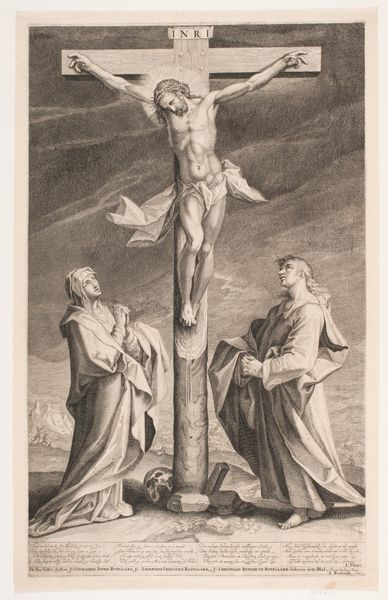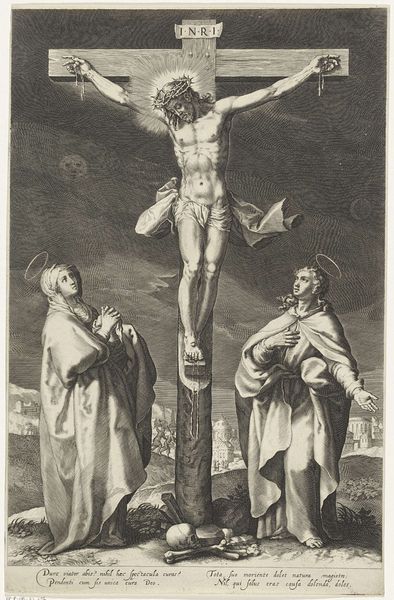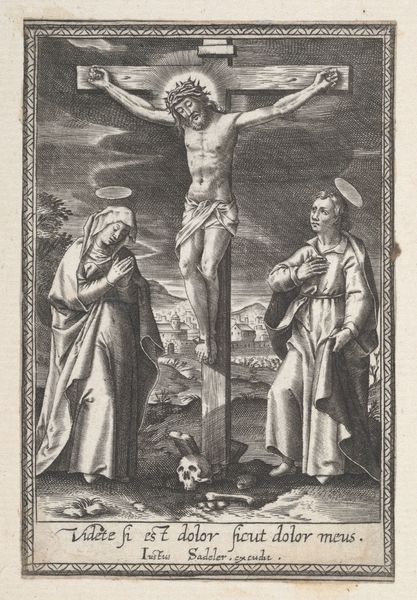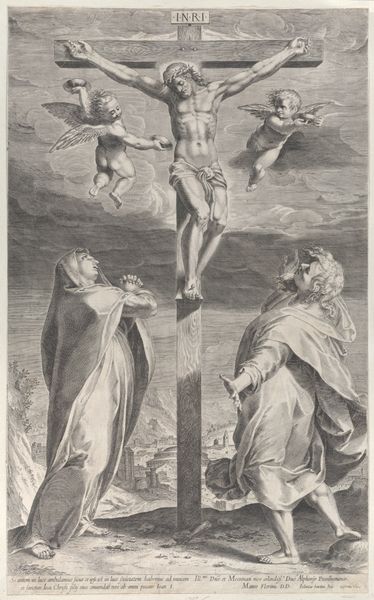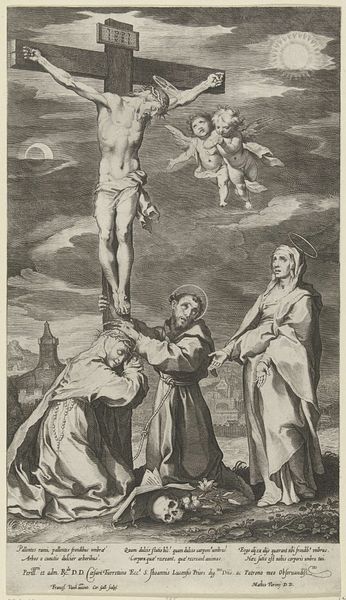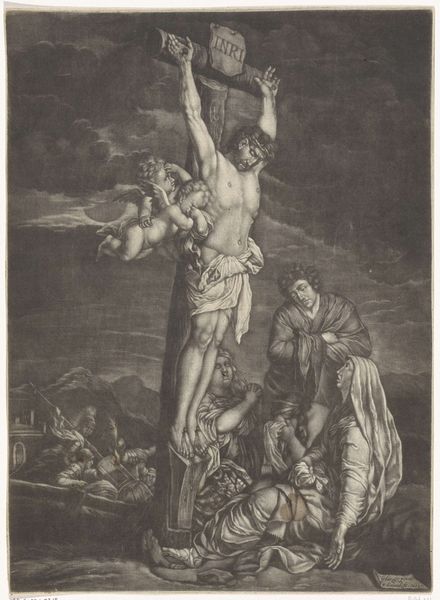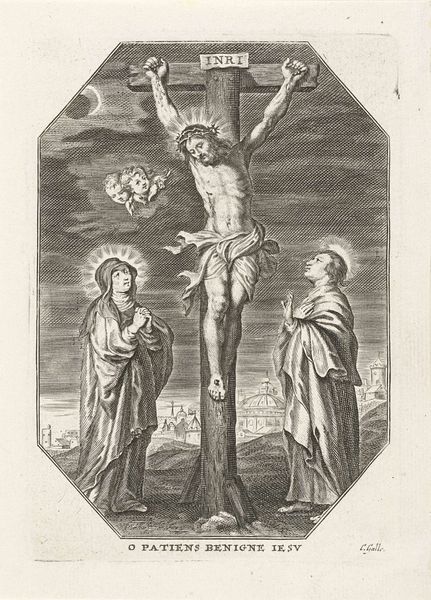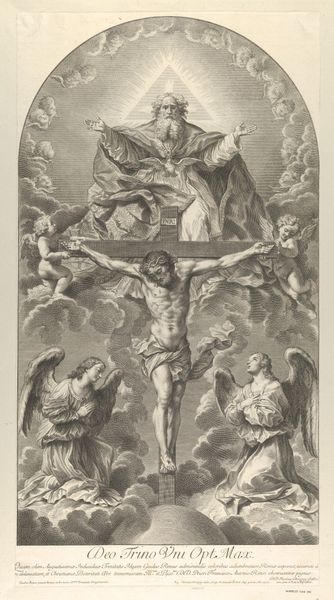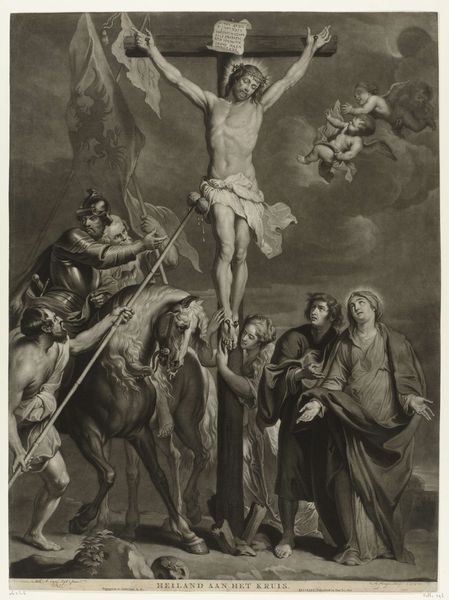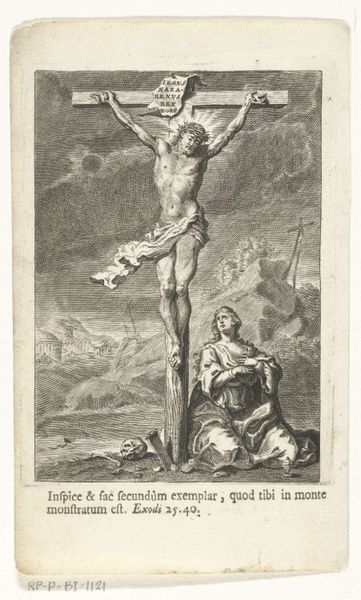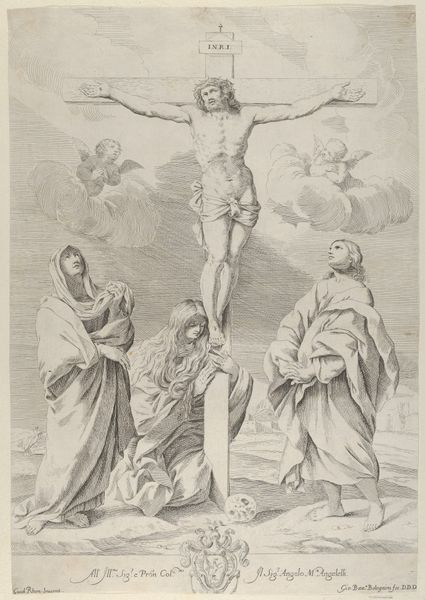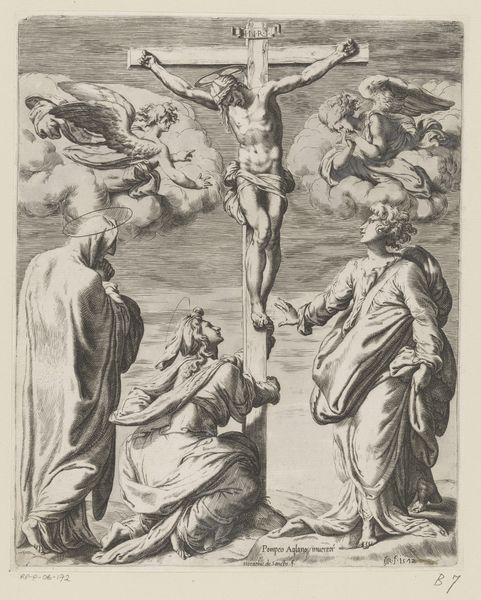
Dimensions: height 508 mm, width 322 mm
Copyright: Rijks Museum: Open Domain
Editor: Here we have "Gekruisigde Christus met Maria en Johannes," a 1588 engraving by Raffaello Guidi, housed in the Rijksmuseum. The figures convey an incredible amount of emotion through line work. What's your interpretation of this piece? Curator: Well, I see more than just emotion; I see a highly staged drama. This isn't simply a depiction of grief, but a constructed narrative about power, suffering, and redemption. How do you see the historical context shaping this portrayal? Editor: I suppose that it's Baroque, so high drama would fit. How much does the print medium impact the message? Curator: Precisely. Prints made this kind of imagery accessible to a wider audience, turning religious iconography into a form of propaganda, really. The idealized, almost theatrical poses of Mary and John serve to reinforce established social and religious hierarchies. It begs the question: whose story is really being told here? How do you see that reflected in the composition itself? Editor: Now that you point it out, I see the dramatic landscape in the back... It makes the subjects in the foreground seem almost like actors on a stage. Curator: Exactly! And consider the gazes. They're directed upwards, not towards the viewer. The image dictates a specific response – piety, reverence, submission. Where does it leave space for genuine, individual emotional response to faith? Editor: I hadn’t really considered the manipulation of the scene, I was mainly interested in the expression. Curator: And that's a starting point! Seeing the mechanics of the imagery allows us to explore whose agendas it upholds and, possibly, subverts. Editor: I see it now. I'll certainly consider prints from a socio-political angle from now on!
Comments
No comments
Be the first to comment and join the conversation on the ultimate creative platform.
